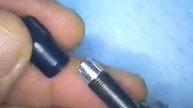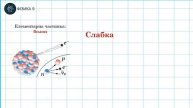Class X science chemistry 200 most important question series for PYQ cbse board exam 2023 ncert
Elements are classified on the basis of similarities in their properties.
n Döbereiner grouped the elements into triads and Newlands gave the Law of Octaves.
n Mendeléev arranged the elements in increasing order of their atomic masses and
according to their chemical properties.
n Mendeléev even predicted the existence of some yet to be discovered elements on
the basis of gaps in his Periodic Table.
n Anomalies in arrangement of elements based on increasing atomic mass could be
removed when the elements were arranged in order of increasing atomic number,
a fundamental property of the element discovered by Moseley.
n Elements in the Modern Periodic Table are arranged in 18 vertical columns called
groups and 7 horizontal rows called periods.
n Elements thus arranged show periodicity of properties including atomic size,
valency or combining capacity and metallic and non-metallic character.
Carbon is a versatile element that forms the basis for all living organisms and many
of the things we use.
n This large variety of compounds is formed by carbon because of its tetravalency
and the property of catenation that it exhibits.
n Covalent bonds are formed by the sharing of electrons between two atoms so that
both can achieve a completely filled outermost shell.
n Carbon forms covalent bonds with itself and other elements such as hydrogen,
oxygen, sulphur, nitrogen and chlorine.
n Carbon also forms compounds containing double and triple bonds between carbon
atoms. These carbon chains may be in the form of straight chains, branched chains
or rings.
n The ability of carbon to form chains gives rise to a homologous series of compounds
in which the same functional group is attached to carbon chains of different lengths.
n The functional groups such as alcohols, aldehydes, ketones and carboxylic acids
bestow characteristic properties to the carbon compounds that contain them.
n Carbon and its compounds are some of our major sources of fuels.
n Ethanol and ethanoic acid are carbon compounds of importance in our daily lives.
n The action of soaps and detergents is based on the presence of both hydrophobic
and hydrophilic groups in the molecule and this helps to emulsify the oily dirt and
hence its removal.
Elements can be classified as metals and non-metals.
n Metals are lustrous, malleable, ductile and are good conductors of heat and
electricity. They are solids at room temperature, except mercury which is a liquid.
n Metals can form positive ions by losing electrons to non-metals.
n Metals combine with oxygen to form basic oxides. Aluminium oxide and zinc oxide
show the properties of both basic as well as acidic oxides. These oxides are known
as amphoteric oxides.
n Different metals have different reactivities with water and dilute acids.
n A list of common metals arranged in order of their decreasing reactivity is known
as an activity series.
n Metals above hydrogen in the Activity series can displace hydrogen from dilute
acids.
n A more reactive metal displaces a less reactive metal from its salt solution.
n Metals occur in nature as free elements or in the form of their compounds.
n The extraction of metals from their ores and then refining them for use is known
as metallurgy.
n An alloy is a homogeneous mixture of two or more metals, or a metal and a
non-metal.
n The surface of some metals, such as iron, is corroded when they are exposed to
moist air for a long period of time. This phenomenon is known as corrosion.
n Non-metals have properties opposite to that of metals. They are neither malleable
nor ductile. They are bad conductors of heat and electricity, except for graphite,
which conducts electricity.
PDF प्राप्त करने के लिए आप हमारा टेलीग्राम चैनल ज्वाइन कर सकते हैं
Our telegram link https://t.me/nbddevraj
TARGET BOARD 2023 PLAYLISTS:
CLASS 12
PHYSICS
1. Electric charge and field - https://youtube.com/playlist?list=PLaD6vjvzSDN1i-oUyajmQY4e8DZqcMx6I
CHEMISTRY
1. Solution - https://youtube.com/playlist?list=PLaD6vjvzSDN0jos34GuRbd16xOkVX9BM6
IUPAC Nomenclature - https://youtube.com/playlist?list=PLaD6vjvzSDN3cX7l2_ffepfhl-QTBh-J-
HALOALKANE - https://youtube.com/playlist?list=PLaD6vjvzSDN1Y783GYexyhoWa1y0OFKEh
OUR SOCIAL MEDIA LINKS :
FACEBOOK - https://www.facebook.com/profile.php?id=100071572310349
INSTAGRAM - https://instagram.com/divyachem_?igshid=YmMyMTA2M2Y=
FACEBOOK PAGE - https://www.facebook.com/Divyachem-100324816101067/
Видео Class X science chemistry 200 most important question series for PYQ cbse board exam 2023 ncert автора Laughing Lab
Видео Class X science chemistry 200 most important question series for PYQ cbse board exam 2023 ncert автора Laughing Lab
Информация
14 ноября 2024 г. 9:54:44
01:06:40
Похожие видео
 Selena Gomez Theme - Steve Roger ( video )
Selena Gomez Theme - Steve Roger ( video ) Ох уж эти качели весной 😂 #пластическийхирург #биполя
Ох уж эти качели весной 😂 #пластическийхирург #биполя Dremel 3000 Flex Shaft Assembly Instructions - Introduction to Dentistry and Lab
Dremel 3000 Flex Shaft Assembly Instructions - Introduction to Dentistry and Lab Хурма — Титаны 9:7
Хурма — Титаны 9:7 Семья Швайба | Путь, эмоциональные качели, цели
Семья Швайба | Путь, эмоциональные качели, цели 💎 Интро логотипа - ЭВРИКА Студия рекламного дизайна | заказать визуализацию дома
💎 Интро логотипа - ЭВРИКА Студия рекламного дизайна | заказать визуализацию дома Топ 50 Редких фотографий ВЛАДА РАММА
Топ 50 Редких фотографий ВЛАДА РАММА SAS LED Neon Light HD
SAS LED Neon Light HD ПОБЕДИЛ ТИТАНА БЕЗ ОРУЖИЯ | SHADOW FIGHT 2 БЕЗ ОРУЖИЯ
ПОБЕДИЛ ТИТАНА БЕЗ ОРУЖИЯ | SHADOW FIGHT 2 БЕЗ ОРУЖИЯ КТО КАЧАЛСЯ НА ТАКОЙ КАЧЕЛИ?
КТО КАЧАЛСЯ НА ТАКОЙ КАЧЕЛИ? Мальчик массой 50 кг качается на качелях с длиной подве
Мальчик массой 50 кг качается на качелях с длиной подве Dysprosium - Periodic Table of Videos
Dysprosium - Periodic Table of Videos Серебро: мощное накопление и ключевые уровни — готовимся к движению!
Серебро: мощное накопление и ключевые уровни — готовимся к движению! AIRBUS A320 251 NEO - PROTO 002 - F-WNEW
AIRBUS A320 251 NEO - PROTO 002 - F-WNEW Проект одноэтажного дома F-4427
Проект одноэтажного дома F-4427 Баскетбол для души, Матюков Андрей 20250118
Баскетбол для души, Матюков Андрей 20250118 Проект одноэтажного дома F-4148
Проект одноэтажного дома F-4148 how to make cinematic videos with the DJI Osmo Action 5 PRO
how to make cinematic videos with the DJI Osmo Action 5 PRO Парковка 90 градусов легко! #пдд #automobile#юмор #shorts #парков
Парковка 90 градусов легко! #пдд #automobile#юмор #shorts #парков Фундаментальні взаємодії в природі. Межі застосування фізичних законів і теорій
Фундаментальні взаємодії в природі. Межі застосування фізичних законів і теорій
